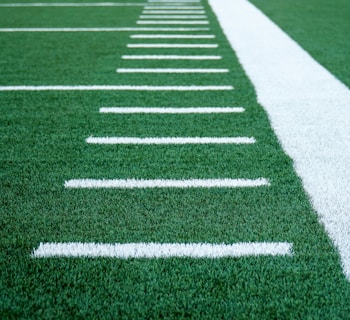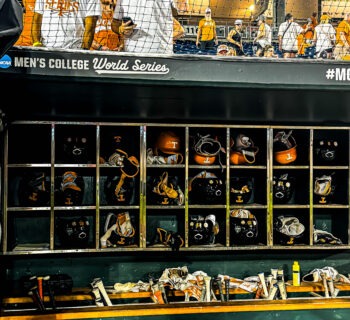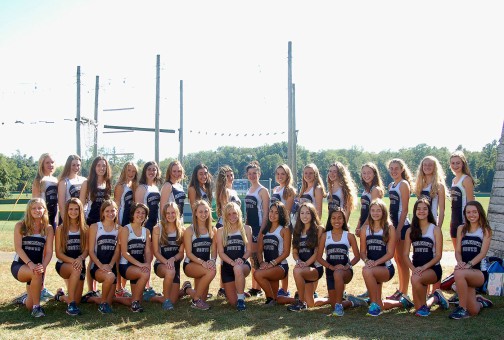The game of women's lacrosse has had many different looks to it over the years, especially at the college level. With new rules being approved and implemented yearly, it begs to question if there will ever be a time where the game stays the same?
Down the road, a time of consistency will come, but not this year, as this past Wednesday the NCAA Playing Rules Oversight Panel made serious changes to the pace of play with the addition of several different player-up opportunities, as well as much needed improvements.
These changes are going to be huge for the game of women’s lacrosse and arguably just as impactful as the addition of the shot clock, switch from 30 minute halfs to 15 minute quarters, self start, free movement and defensive players in the crease.
What are the New Rules for Women’s Lacrosse?
More Green Card Fouls
To improve the likeness of potential player-up opportunities for teams, the NCAA panel decided to make more fouls cardable offenses. If a player commits one of the following fouls, they will be issued a green card, which is a one minute releasable penalty.
- Charging
- Blocking/Illegal picks
- Cross Checks
- Holding
- Forcing through
- Illegal use of the stick
- Tripping
- Pushing
These green cards can be issued anywhere on the field including in between the 30s. The panel also extended the time of a red card from two minutes non-releasable to five minutes non-releasable. A red card is to be issued for contact to the body that officials think warrants a greater penalty than the green card.
The increase in time for red cards and the expanded use of the green card can be connected to the gruesome injury that a Yale women’s lacrosse player suffered during the season in 2023. The severe injury sparked an ongoing conversation about the safety of women’s lacrosse.
The addition of more green card fouls is both good and bad in the way it is going to change the game. On the positive side it can potentially lead to more goals being scored and the ball moving faster, because teams will want to capitalize when they are player-up. It will also ensure more caution in players actions and all around a safer environment during the game.
On the negative side having more cardable fouls means more whistles being blown. In women’s lacrosse there is already a great amount of stoppage to ensure the safety of the players. With the addition of more green cards it can be predicted that there will be a whistle blown almost every other minute, which will ultimately slow the game down even more.
It is almost ironic when thinking about all the panel has done to speed up the game, and then they approve a decision that will slow it back down again. However, we can predict all we want on how the increased green cards affect the game, but we won’t directly know the repercussions until the end of the 2024 season.
Three Seconds Adjustment
The NCAA panel made a small adjustment to the three second rule. The original rule stated that a defender must be marking someone within the eight meter arc, if they aren’t they have three seconds to find an opposing player and be a stick length away to not get called for the penalty.
The new change to the rule is that defenders can now be an arm AND a stick length away from opposing players. This small tweak allows defenders to be further away from the player they are guarding and cover more space.
This rule will be extremely beneficial for defenders when working through cutters and pickers, as well as for teams that run any version of a zone. Anytime a defender can have more space between the player she is guarding inside of the eight meter makes the defender's job easier.
As for offensive players, they won’t be a fan of this rule as much as defenders, because they aren’t benefiting from the ruling, in fact they are hurting from it. Attackers often try to move the ball quickly and move around a lot when playing against a zone.
The purpose of this is to try and move the rover/backer around and potentially get them caught in three seconds, so the attacking team can receive an eight meter. However, with this tweak in the ruling, defenders now have more slack when it comes to their recovery to and from different players and they get more space to do it.
Other Notable Rule Changes
- A player who fakes or embellishes being fouled will be issued a one-minute penalty.
- No matter the outcome of a shot, if a referee blows their whistle for a shooting-space violation right after or simultaneously with the shot, no penalty will be administered.
- If a free position is awarded to a team any player on the field can take possession of the ball, UNLESS it is given with an eight meter position shot. If that is the case then the player who was fouled must take the free position shot.
- If a player receives a cardable penalty, not only will the time carry over into the next period or overtime, but the team who is player-up will gain possession at the spot of the ball or dot if it is within the critical scoring area.
- If the team on defense has too many players below the restraining line in their defensive end, it will lead to a one minute penalty.
- If an official instructs a player to exit the field and they don’t leave at once, a delay of game penalty can be issued.
- Video review is still an experimental rule, however officials (if available) can use video review, if appropriate, to identify the offender of a cardable foul or in scenarios of flopping/embellishment fouls and cardable fouls on any review involving the goal circle.
- Made it more clear that players can wear lacrosse specific ND200 close fitting padded compression shirts under their jerseys.
Rejected Rule
A proposal was put forth to the NCAA panel that suggested a decrease in players on the field. So instead of having 7-vs-7 when the ball is possessed below the restraining line and 12-vs-12 total, the proposal called for 6-vs-6 and 11-vs-11.
This would be arguably one of the biggest changes to the game of women’s lacrosse. By eliminating two players on the field for each team a variety of repercussions would happen. On the positive side, it will allow more space for attackers to work below the restraining line and more space to clear the ball up the field.
On the negative side, the NCAA could potentially take scholarship spots away since there will be two less players on the field. This would have drastic effects for programs all across the country and at every level (D1, D2, D3). It could impact the amount of players programs carry on a roster, which would affect the amount of girls that can play the sport they love at the next level.
This significant rule change is one to debate for another day as the proposal was rescinded. The women’s lacrosse we all know and love stays (semi) the same for another year.
- Giants Make Big Coaching Changes After Drop Off Year - Who Is In and Who Is Out? - January 12, 2024
- Sterling Shepard Gets One Giant Send Off In Week 18 Victory - January 8, 2024
- Yankees Finally Address Pitching Issues With Poteet Signing - January 5, 2024









